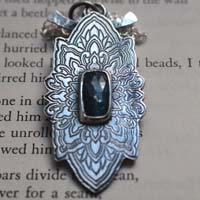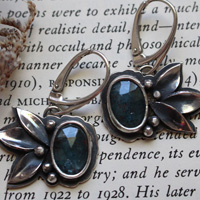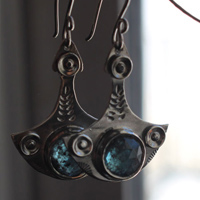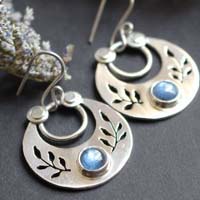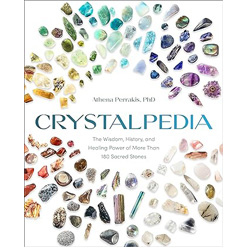- Jewelry
- Inspiration
- Our imagination
- Birthstones
- Celebrating with Eternal Flowers
- Druids and druidesses
- Flower meanings
- History, archeology jewelry
- History and healing properties of metals
- History and healing properties of stone
- Illumination jewelry
- Japanese symbols
- Maya calendar jewelry
- Stone color symbolism
- Stones catalogue
- Wedding anniversaries
- Searches a theme on the site
- Good Deals
- Paintings
- About
- Contact
JEWELRY
- Anklet
- Bracelets
- Brooches
- Cufflinks
- Earrings
- Pendants & Necklaces
- Rings
- Draw your jewelry
- How to clean your jewel
- Metal we used
INSPIRATION
- Our imagination
- Birthstones
- Celebrating with Eternal Flowers
- Druids and druidesses
- Flower meanings
- History, archeology jewelry
- History and healing properties of metals
- History and healing properties stones
- Illumination jewelry
- Japanese symbols
- Maya calendar jewelry
- Stone color symbolism
- Stones Catalogue
- Wedding anniversaries
- Searches a theme on the site
Kyanite (disthene): history, healing properties and lithotherapy
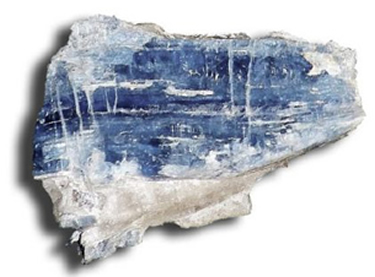
Kyanite (disthene) properties

Known in France as disthene, this stone is also recognized by the International Mineralogical Association under the name kyanite.
Belonging to the aluminum silicate group, disthene is emblematic of high-pressure metamorphic rocks, such as schist and gneiss, where it forms under extreme temperature and pressure conditions during mountain formation.
Naturally colorless, disthene owes its famous blue hue to the presence of chromium, although its color spectrum ranges from blue to violet, including shades of green, yellow, pink, white, brown, and gray. The color can vary depending on trace elements found in the stone, such as iron or chromium, which add green, yellow, or emerald tones. Quartz or muscovite inclusions may also be present, adding unique visual depth to the stone.
The name "disthene" originates from the Greek "di," meaning "two," and "stenos," meaning "strength," referring to the electrical properties this crystal acquires through friction, which vary according to the stone’s orientation. This anisotropy, which makes disthene unique, is also reflected in its hardness. Along the longitudinal axis of its crystals, disthene’s hardness ranges from 4 to 5 on the Mohs scale, while along the transverse axis, it can reach 6.5 to 7. This characteristic makes it particularly complex and delicate to cut. The term was introduced by René-Just Haüy in 1801.
As for the term "kyanite," sometimes spelled "cyanite," it was coined by Abraham Gottlob Werner in 1789 and derives from the Greek "kuanos," meaning "blue." Disthene is also known by other names such as foliated beryl, cyanite, sappare, blue talc, Munkrudite, and zeolite cyanite.
Two fascinating varieties of this stone stand out. Chrome kyanite, a chromium-rich variety, is found mainly in New Zealand and Russia, displaying captivating shades ranging from deep blue to emerald green, with shimmering highlights. Rhaeticite, on the other hand, offers a palette of colors ranging from subtle gray to intense black, giving each specimen a mysterious aura.
Disthene also finds its place in industry. Thanks to its high-temperature stability and high melting point, it is used in the production of refractory ceramics, molds, and heat-resistant materials.
Mines: Austria, Braziil, Canada, USA, France, Italy, Kenya, Myanmar, Nepal, Switzerland, Zimbabwe.
History, legends and beliefs about kyanite (disthene)
Until the 20th century, kyanite was often mistaken for sapphire due to their shared blue hue and similar appearance, which contributed to blurring the distinct historical accounts of the two stones. This confusion long prevented disthene from developing its own mythological or legendary stories, often allowing better-known stones to take its place in ancient narratives.
Mentions online suggest that kyanite may have been used as a compass as far back as Antiquity. Thanks to its electrical properties and its ability to align itself along precise axes when rubbed, some claim it was suspended from a single hair to guide travelers, particularly sailors and land explorers. While this story is intriguing, there is little historical evidence to support it. It is therefore likely that this anecdote is more rooted in modern folklore than in any ancient practice.
In the realm of esoteric beliefs, there is also the surprising mention of kyanite being used as the material for the sword of Archangel Michael. This association, which echoes medieval beliefs about mystical weapons and precious stones, lacks tangible historical foundations. It is more likely that this legend arose from a recent revalorization of kyanite in spiritual narratives or contemporary lithotherapy, where it is often associated with protective and spiritual connection properties.
Despite the ambiguity surrounding its ancient history, disthene gained recognition from the 18th century onward thanks to the work of mineralogists like Abraham Gottlob Werner and René-Just Haüy, who distinguished it clearly from other blue gemstones. Since then, it has found a place in mineralogical collections and sparked interest not only for its unique physical properties but also for its potential industrial uses.
Healing properties and benefits of the kyanite (disthene)
Throughout human history, man has attributed various healing properties, virtues, and beliefs to kyanite. The information presented here is shared for cultural and historical purposes, to illustrate the symbolic relationship between this stone and man throughout time and civilizations. It does not constitute a therapeutic or medical recommendation.
- Disthene is often associated with enhancing auditory perception. It is recommended to help maintain balance and clarity of hearing, particularly for individuals suffering from temporary or chronic hearing disorders. It is also said to promote better active listening and improve communication by refining the understanding of surrounding sounds.
- Kyanite is renowned for its soothing properties on laryngeal disorders, such as voice loss or vocal cord irritation. Used in lithotherapy, this stone is recommended for people who heavily use their voice, such as singers, teachers, or public speakers. It is believed not only to support the healing of vocal afflictions but also to maintain long-term vocal cord health.
- Kyanite is also known for its positive effects on the nervous system, particularly in helping restore motor functions after an injury. Its energies are believed to aid nerve regeneration and stimulate areas of the brain related to movement. It is also considered useful in calming nervous tension and alleviating the effects of stress, contributing to better mental and physical balance.
- Disthene is regarded as a valuable ally in regulating disorders related to the adrenal and parathyroid glands, which play a key role in managing stress and metabolism. Additionally, it is reputed to relieve issues in the urogenital system, particularly kidney problems and hormonal imbalances affecting this area. In lithotherapy, it is often paired with meditation practices or energy healing to target these physiological aspects.
 Please note that all healing properties attributed to stones come from ancient traditions and various cultural sources. This information is provided for informational purposes only and does not constitute medical advice. In case of any health concerns, it is recommended to consult a qualified professional.
Please note that all healing properties attributed to stones come from ancient traditions and various cultural sources. This information is provided for informational purposes only and does not constitute medical advice. In case of any health concerns, it is recommended to consult a qualified professional.
Kyanite jewelry sample
To learn more about litotherapy, we recommend you the following books:

